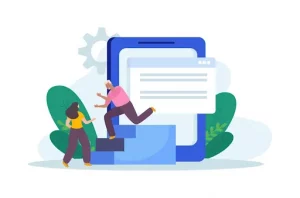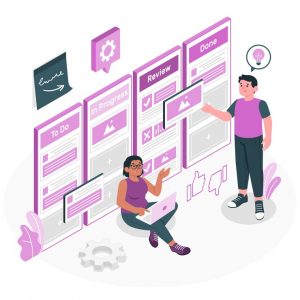In today’s rapidly evolving technological landscape, businesses face a constant battle: staying ahead of the curve while maintaining the functionality of existing systems. This is where legacy applications come in – those trusty, dependable workhorses that have served you well for years, but may now be hindering your ability to innovate and adapt.
So, what do you do when your legacy applications start to feel more like a burden than a benefit? The answer lies in Legacy Application Transformation (LAT).
What is Legacy Application Transformation?
LAT is the process of modernizing your legacy applications to improve their efficiency, security, and scalability. It’s not just about slapping a new coat of paint on; it’s about strategically adapting your applications to meet the demands of the modern business world.
Why Does Legacy Application Transformation Matter?
Here are some compelling reasons to consider LAT:
- Enhanced Performance & Scalability: Legacy applications often struggle with increased workloads. LAT can help them handle higher volumes of data and users more efficiently.
- Improved Security: Outdated applications are vulnerable to security breaches. LAT can implement modern security measures to protect your valuable data.
- Reduced Costs: Maintaining legacy applications can be expensive. LAT can help streamline operations and reduce ongoing maintenance costs.
- Increased Agility & Innovation: Legacy applications can hinder your ability to adapt to new technologies and business models. LAT allows you to embrace change and stay competitive.
- Enhanced User Experience: Modernized applications are more intuitive and user-friendly, leading to improved user satisfaction.
Choosing the Right LAT Approach:
There’s no one-size-fits-all approach to LAT. The best method depends on several factors, including the application’s age, complexity, and business needs. Here are some common LAT approaches:
- Rehosting: Moving legacy applications to a cloud platform for improved scalability and easier access.
- Replatforming: Migrating legacy applications to a new technology stack for better performance and integration.
- Refactoring: Restructuring the application’s code to improve maintainability and performance.
- Modernization: Integrating modern features and functionalities into the existing application.
- Retirement: Phasing out the legacy application completely and replacing it with a modern solution.
Benefits of a Successful Legacy Application Transformation:
A well-executed LAT project can have a significant impact on your business by:
- Boosting Productivity: Streamlined applications empower your employees to work more efficiently.
- Improving Customer Experience: Modernized interfaces facilitate better customer engagement.
- Reducing Risk: Enhanced security protects your data and systems from cyber threats.
- Unlocking New Opportunities: Modernized applications allow you to embrace new technologies and business models.
Ready to Tame Your Legacy Beast?
Transforming legacy applications can seem daunting, but it doesn’t have to be. By partnering with an experienced LAT specialist, you can develop a strategic plan and choose the right approach for your unique needs.
Here at Skeletos, we understand the challenges and opportunities associated with LAT. We offer a comprehensive suite of services to help you navigate the process flawlessly and achieve the desired results.
Contact us today for a free consultation and discover how LAT can reinvigorate your legacy applications and empower your business for future success!






